What Really Happened to George Floyd?
Length: • 11 mins
Annotated by Lance Mason
It has been almost four years since George Floyd’s death in police custody sparked riots in American cities and protests around the world. Since then, the public, thanks to the reporting of mainstream journalists, has settled on a consensus about what happened to Floyd on the evening of May 25, 2020: officers were in the process of arresting Floyd for paying with counterfeit money at a convenience store when Officer Derek Chauvin, with conscious cruelty, subjected him to his “signature move”—a knee on the neck—cutting off his oxygen supply and murdering him. Officers J. Alexander Kueng, Thomas Lane, and Tou Thao, rather than intervene, aided and abetted Chauvin’s crime.
If journalism is the first draft of history, then this draft is now due for a major revision.
A new documentary by Alpha News, The Fall of Minneapolis, challenges three key parts of the story, now accepted as fact:
- The knee-on-the-neck hold was Chauvin’s signature move, as opposed to a standard maneuver practiced by the Minneapolis Police Department (MPD).
- Asphyxiation was the cause of George Floyd’s death.
- Chauvin received a fair trial by an impartial jury.
I had never heard of Alpha News before this documentary. The producer of the film, Liz Collin, was a successful reporter and anchor at WCCO, Channel 4, in Minneapolis for many years before the death of George Floyd derailed her career. The sticking point was that her husband, former lieutenant and president of Minneapolis police union Bob Kroll, defended the four officers who arrested Floyd, denounced the rioters, who had recently captured and burned down a police precinct, as a “terrorist” movement, and highlighted Floyd’s long rap sheet in a letter to police union members.
Both Kroll and Collin received an intense cancellation—including a protest outside their home—which led WCCO to push Collin out of her anchoring job, and eventually led her to leave WCCO and join Alpha News. While there, she teamed up with the film’s director, Dr. JC Chaix, a former police officer and volunteer firefighter, to make The Fall of Minneapolis.
When people think of George Floyd, they think of a viral clip captured and uploaded by a bystander. The infamous clip appeared to show Chauvin’s knee on Floyd’s neck for 8 minutes and 46 seconds (later amended to 9 minutes and 29 seconds) along with Floyd’s bone-chilling screams: “I can’t breathe!”; “Mama!”; “I’m gonna die!”

Like everyone who watched this clip, I was horrified when I saw it. I could not understand why Chauvin continued to keep his knee on Floyd’s neck when he clearly couldn’t breathe. I couldn’t even understand why they put him belly-down on the pavement in the first place—a humiliating and uncomfortable position—rather than in the back of the squad car.
But the viral clip, as so many often do, started in the middle of the story. When Judge Peter Cahill allowed full footage (with multiple angles) to become public in August 2020, it showed three things that were not obvious from the viral clip:
First, the officers spent several minutes trying to get Floyd into the back of the squad car before agreeing, at Floyd’s request, to place him on the ground instead. (Floyd had complained of claustrophobia in the back of the squad car.)
Second, Chauvin’s knee was not on Floyd’s neck for 9 minutes and 29 seconds. It was probably on his neck for at most 4 minutes, after which it appeared to be “above the shoulder blades,” as one of the prosecution’s own witnesses conceded during Chauvin’s criminal trial in 2021.
Third, and most importantly, Floyd was saying that he couldn’t breathe before he was placed on the ground, as this clip from the documentary shows below:
The court of public opinion may have made up its mind based on a single out-of-context clip. But Chauvin’s trial in 2021 represented a chance to revise that consensus in light of all the evidence. In order to convict Chauvin of felony murder—which differs from more serious murder charges in that it requires neither premeditation nor intent to kill—the prosecution had to prove each element of the crime beyond a reasonable doubt. Among other things, they had to prove that (1) Chauvin’s actions constituted assault (or attempted assault), and (2) that Chauvin’s actions caused the death of George Floyd.
The documentary throws both claims into doubt. What I discovered by making my own calls and confirming the documents shown in the documentary is that these key claims are not certain at all.
Central to proving the first element—felony assault—was the question: Why did Chauvin have his knee on Floyd’s neck and shoulder blade in the first place?
If it was an “improvised position,” as an MPD inspector testified at the trial, then it plausibly constituted felony assault. But if it was a hold that Chauvin, along with the entire MPD, was trained to do in precisely this kind of situation, then it becomes far harder to argue it was assault.
According to the documentary and documents I have reviewed, the move was indeed a standard hold, called the Maximal Restraint Technique (MRT), which the MPD trained its officers to use “in situations where handcuffed subjects are combative and still pose a threat to themselves, officers, or others, or could cause significant damage to property if not properly restrained,” according to the official MPD use-of-force manual. The section that describes MRT is dated to 2002 and was updated in 2014, 2017, and 2018. (The 2023 edition bans MRT.)
What’s more, an MPD training presentation created and shown to academy recruits in 2018 includes a slide showing an officer performing a hold very similar to the one Chauvin used on Floyd.
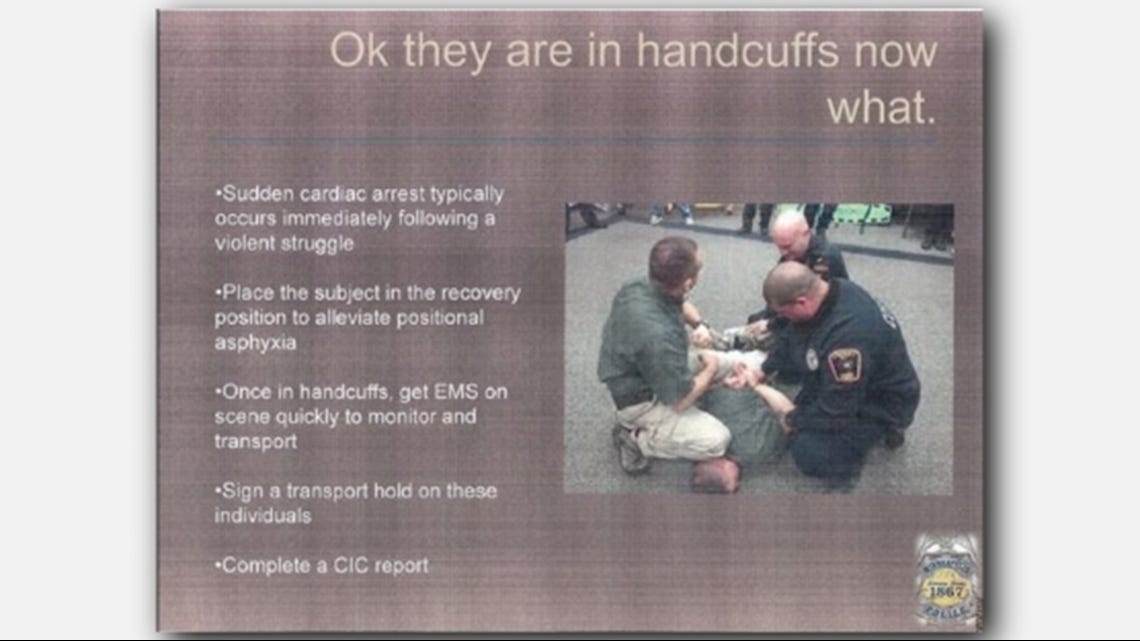
At his trial, Chauvin’s lawyers wanted to show the jury the above photo from the MPD PowerPoint slide. But the prosecution moved to exclude it, and Judge Cahill agreed. Their reason was that Chauvin could not prove that he had been personally trained on that photo.
But this rationale does not survive scrutiny. In the documentary, six current and former MPD police officers affirm that the MRT was indeed standard training—training they had received themselves. When asked if he was trained on MRT, Rich Walker, an African American MPD sergeant with 19 years on the force, replied: “Yes, all the police officers were trained in MRT.”
Body cam footage shows that, as the officers were taking Floyd out of the squad car, Officer Thomas Lane verbally recommended that they implement the MRT (though he misspoke and called it “MRE”). If Officer Lane, who had been on the force for less than a week, was aware of MRT, then it defies belief to think Chauvin, a veteran of almost twenty years, was unaware of it—regardless of which particular material he’d been trained on.
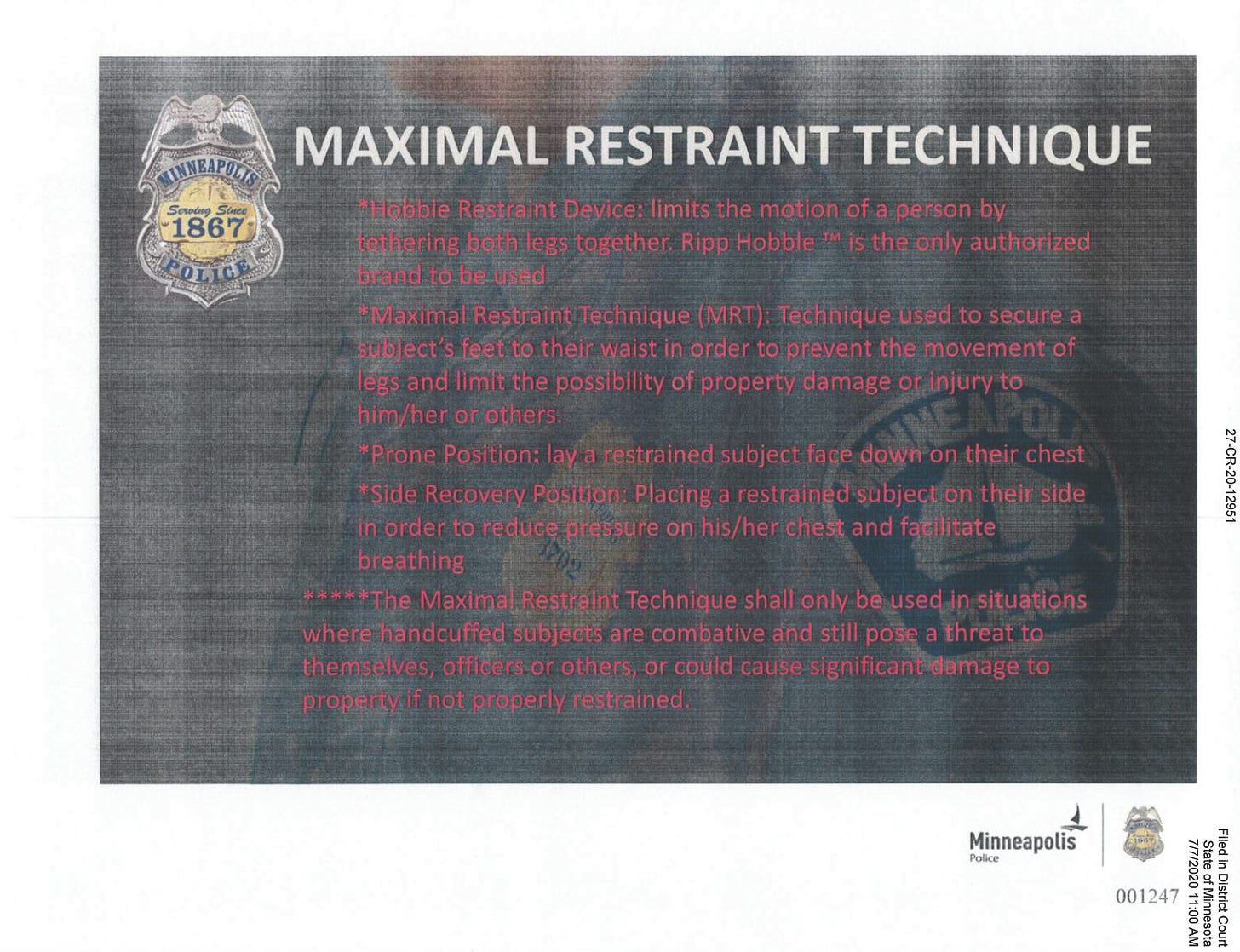
If Chauvin and other officers were performing a trained hold, a reasonable juror could easily doubt that he had committed felony assault. Had Chauvin’s legal team had the chance to present all the relevant evidence, the verdict might have been different.
Chauvin was sentenced to 22.5 years in prison for felony murder. However, there is no guarantee that he will survive it. In November, he was stabbed 22 times in the prison library by an inmate. The inmate told investigators that he chose to stab Chauvin on Black Friday to pay homage to the Black Lives Matter movement as well as the “Black Hand” symbol associated with the Mexican Mafia. Officers Thao, Kueng, and Lane have somewhat better prospects, having been sentenced only to 4.75, 3.5, and 3 years, respectively, for aiding and abetting manslaughter.
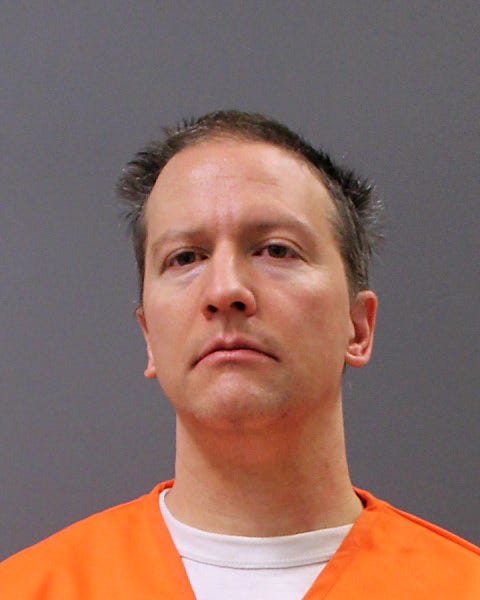
Collin and Chaix hope that by raising awareness about some of the flaws from the officers’ trials, public pressure will build to the point that their cases are reexamined. For the officers, there is perhaps reason for hope, given that the documentary has received 5.7 million views since its online release in late November between YouTube and Rumble (more if you count views on the documentary’s website). Still, according to Collin, there has been no coverage of the documentary by legacy media outlets—with the exception of Fox Nation, which is planning to stream it.
“Perhaps the biggest reason why I wanted to make this documentary,” Chaix told me, “was to let people reckon with the truth.” He went on: “I think far too few of us were given the chance to see all of the evidence and think independently, and dare I say rationally and openly, about the truth in this case.”

Even if Chauvin’s hold was a maneuver trained and sanctioned by the Minneapolis police, the documentary goes on to make a second, equally important claim: the hold may not have led to the death of George Floyd.
One week after Floyd died, mainstream media outlets settled on the narrative that asphyxiation was the cause of death based on two autopsies—one by the county pathologist and one commissioned by Floyd’s family.
But there was only one complete, documented autopsy of George Floyd—performed by Hennepin County medical examiner Dr. Andrew Baker about 12 hours after Floyd died. That autopsy found no evidence of asphyxia. In fact, it found “no life-threatening injuries” whatsoever.
What it did find was that Floyd died of “cardiopulmonary arrest”—his heart and lungs stopped working—during “law enforcement subdual, restraint, and neck compression.” The autopsy’s toxicology report also stated that Floyd had a potentially lethal dose of fentanyl in his blood (11 ng/mL), along with small amounts of methamphetamine and morphine. And finally, the autopsy report concluded that Floyd had serious preexisting conditions, including “arteriosclerotic heart disease” described as “multifocal” and “severe,” “hypertensive heart disease,” and “cardiomegaly” (an enlarged heart).
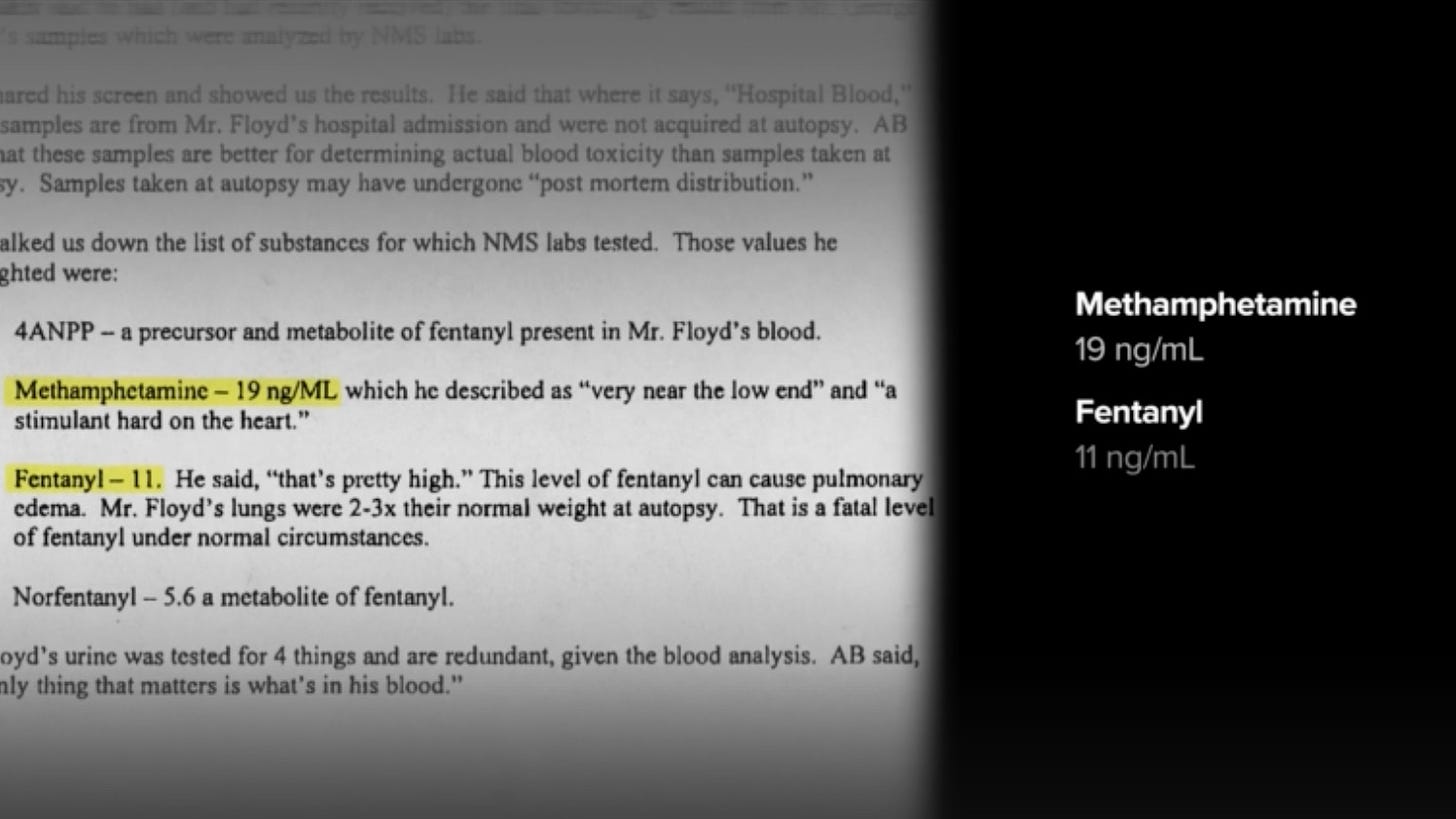
The second so-called “autopsy”—paid for by Floyd’s family—was hardly of equal significance. Unlike Dr. Baker’s report, it was both incomplete and undocumented. Incomplete because the pathologists did not have access to Floyd’s toxicology report, his tissue samples, and even some of his organs (Chaix alleges that they did not have access to Floyd’s body at all, making it more of a “review” than an actual autopsy). And undocumented because the two forensic pathologists who performed it have never published a final autopsy report, despite saying that they would.
One of the two examiners was Dr. Michael Baden, a “celebrity pathologist” with an impressive track record of getting things wrong. In the 1990s, Dr. Baden raked in at least $100,000 testifying for the defense in O.J. Simpson’s murder trial, where he advanced the outlandish “multiple attacker” theory. He also said on television that Ron Goldman (one of the two murder victims) remained standing for ten minutes after being stabbed in the neck—a claim he was later forced to recant under oath.
Dr. Baden’s list of embarrassments does not end there. It was also he who was hired to perform an unofficial “autopsy” of Michael Brown—who was killed by Officer Darren Wilson in 2014 in Ferguson, Missouri—though the body had already been washed and embalmed by the time he got to it. Dr. Baden declared that there was no evidence of a struggle between Brown and Officer Wilson—a claim that was decisively refuted by the official autopsy as well as by Attorney General Eric Holder’s detailed report.
As a fitting coda to his shameful career, Dr. Baden stated in a press conference (bafflingly) that George Floyd was “in good health.” He went on to say: “I wish I had the same coronary arteries that Mr. Floyd had.” (The official autopsy found that one of Floyd’s arteries was 75 percent constricted and another was 90 percent constricted.)
So on the one hand there is a complete, timely, documented autopsy that found no evidence of asphyxia—which is to say no physical evidence that Chauvin’s knee caused Floyd’s death—while also documenting severe underlying disease and a potentially lethal dose of fentanyl. And on the other hand, there is an incomplete, undocumented autopsy conducted in part by a forensic examiner with a long history of incompetence and opportunism. Assessing the forensic evidence alone, I would not find it unreasonable to doubt that Chauvin caused Floyd’s death.
The counterargument, however, is that forensic evidence is not everything. There is also the video itself: Chauvin clearly has his knee on Floyd’s neck for some amount of time, and in that time, Floyd desperately claims that he cannot breathe. On its face, it would appear that the former caused the latter. However, Floyd complained of shortness of breath before Chauvin’s knee was on his neck. At 8:17 p.m., before Chauvin had arrived at the scene, Floyd said, “When I start breathing, it’s gonna go off on me, man.” One minute later, as he resists efforts to put him in the back of the squad car, he yells, “I can’t choke! I can’t breathe!”
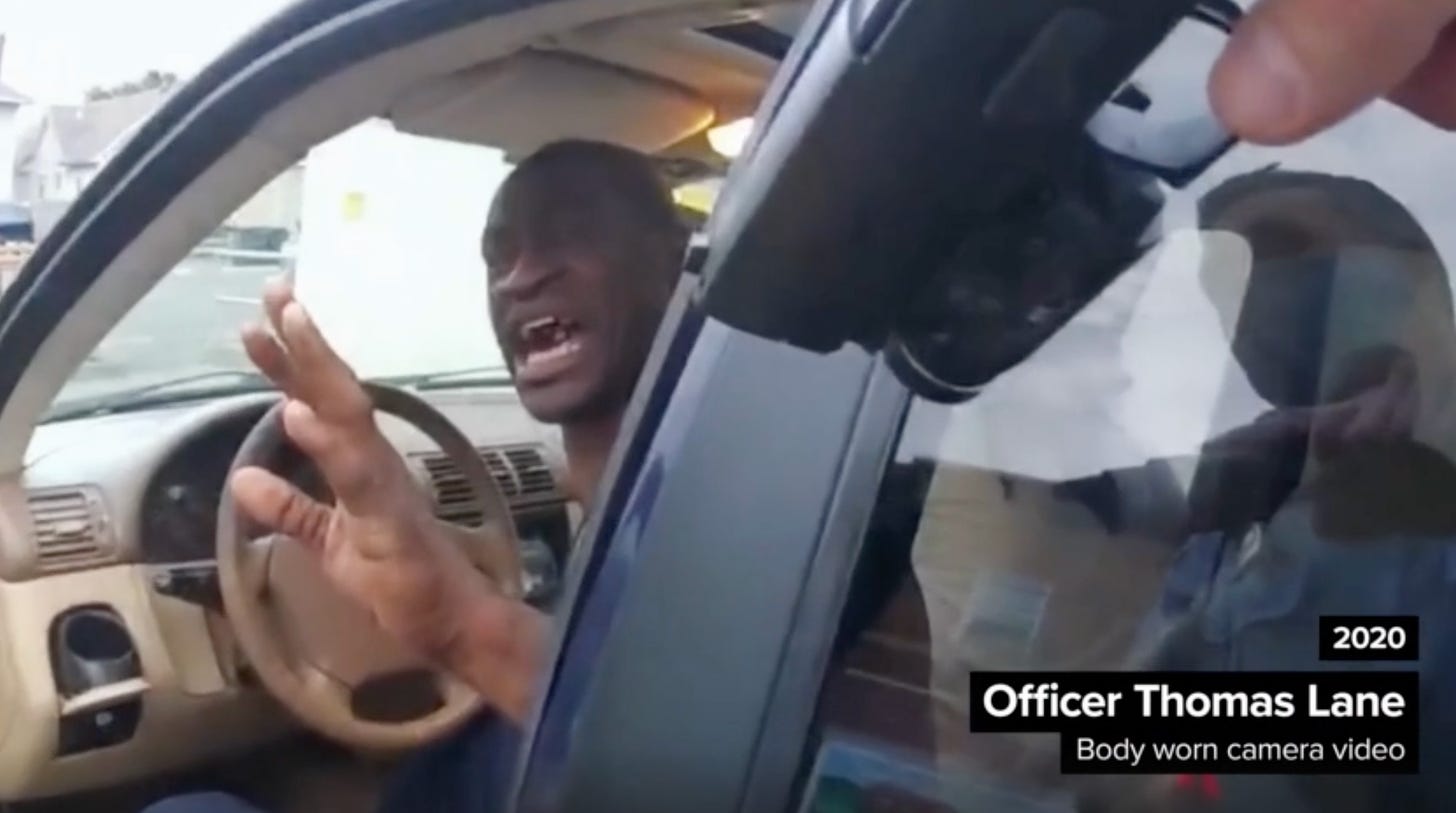
So while it is not unreasonable to think that Chauvin’s knee was the cause of Floyd’s labored breathing, it’s also not unreasonable to think that his labored breathing was caused by other factors—for instance, the stress of the arrest in general, the fentanyl in his system, his preexisting health conditions, or some combination of the three.
In short, there are two major justifications to reasonably doubt Chauvin’s felony murder charge: whether he caused Floyd’s death and whether he committed a felony. As a result, I believe that Chauvin should not have been convicted of murder. Still, you could make the case that Chauvin departed from his training by failing to roll Floyd onto his side—into what the MPD use-of-force manual calls the “side recovery position”—once he lost consciousness. But that error may or may not have amounted to a crime, and surely would not have amounted to felony murder.

Whether or not you agree that Chauvin was guilty, it would be hard for a reasonable person to conclude that he received a fair trial by an impartial jury.
For one thing, months after the verdict, The New York Times revealed that one juror had a Black Lives Matter sign displayed prominently in the window of their home. Think of this in reverse: If Chauvin were exonerated, and a jury member was found to have a Blue Lives Matter sign in the window of their home, wouldn’t we be right to worry about jury bias?
Meanwhile, several seated jurors voiced their fears about what might happen to them when their names became public. According to Chauvin’s appeal brief, juror no. 92 said: “what would happen to me if I was a juror after? If somebody found out or—that was my main concern.” A potential juror—no. 60—is quoted saying that he “would have a hard time being impartial” because of concern for the “safety of my family.” He continued: “If the outcome were to go a certain way and the general public didn’t like that” it “would cause a definite concern from me regarding our family.”
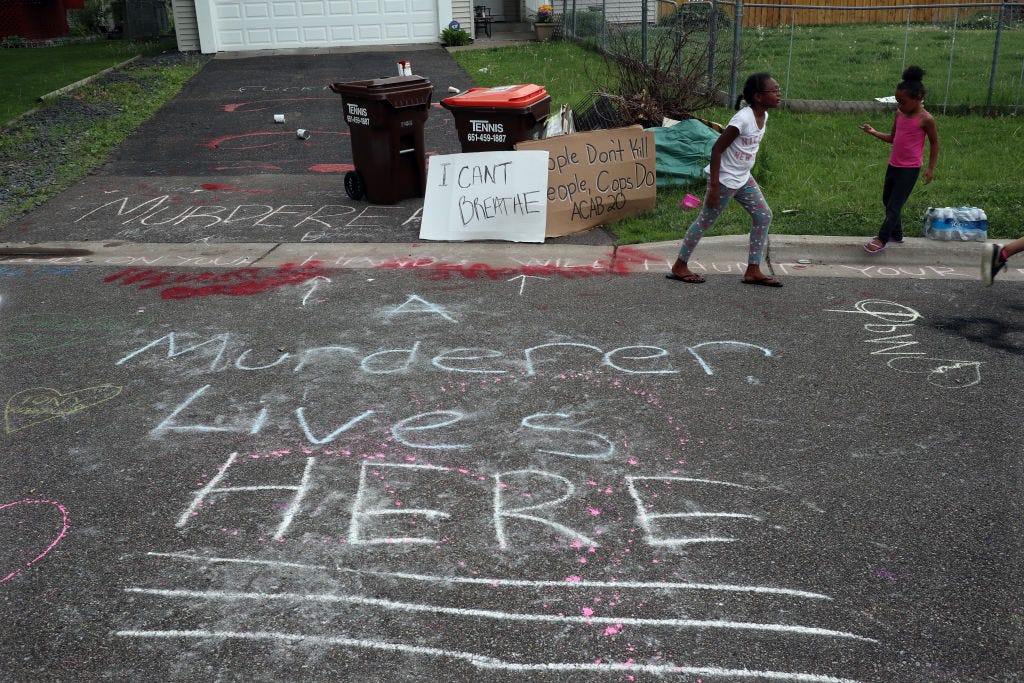
The city of Minneapolis suffered one of the most destructive riots in American history—amounting to half a billion dollars in damage—in the days after Floyd’s death. Everyone involved in Chauvin’s trial knew that if he was acquitted, their city would likely burn once again. Even worse, they knew that if their names became associated with his acquittal, then their lives might be forever changed for the worse.
Dr. Baker, who conducted the official autopsy, said that he received hundreds of phone calls—“some harassing and threatening”—as he was working on his final autopsy report. A deposition transcript from an unrelated lawsuit filed by Hennepin County Principal Attorney Amy Sweasy Tamburino against her boss, Mike Freeman, revealed that Dr. Baker, just hours after performing the autopsy on Floyd, asked her: “Amy, what happens when the actual evidence doesn’t match up with the public narrative that everyone’s already decided on?”
He goes on: “This is the kind of case that ends careers.” Nevertheless, Dr. Baker released his autopsy report soon after and has said that the pressure did not influence his findings in any way.
If Chauvin survives prison, he will not be released until 2038. His appeal was rejected by Minnesota’s appellate court as well as the U.S. Supreme Court. With respect to his federal charges, Chauvin waived his right to appeal as part of a plea deal. As a result, his last resort—a long shot—would be to claim ineffective assistance of counsel. In the meantime, it is up to American society to review the facts with cooler heads than prevailed in 2020 and 2021, and consider the possibility that Chauvin was not a murderer, but a scapegoat.

Coleman Hughes is a columnist for The Free Press. Preorder his book: The End of Race Politics: Arguments for a Colorblind America. Read his last piece “Why Is TED Scared of Color Blindness?” and follow him on X @coldxman.
Become a Free Press subscriber today:
The Free Press earns a commission from any purchases made through Bookshop.org links in this article.